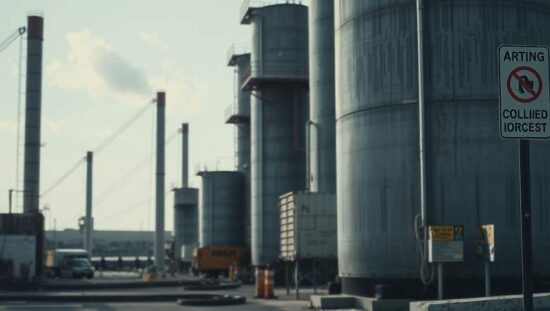Data released this week by the Federal Statistical Office (Destatis) reveals a significant decrease in the release of hazardous substances into the German environment during 2024, yet raises critical questions about the scale of ongoing contamination and the efficacy of preventative measures. While the total volume of released substances plummeted by 69.1% compared to 2023, totaling approximately 6.5 million liters, the fact that 2 million liters – representing 30.7% of the total – remain permanently in the environment is a persistent cause for concern.
The sharp decline from the 21 million liters released in 2023 is attributed, in part, to fluctuations inherent in the data, linked to the unpredictable nature and severity of individual incidents. Strikingly, Destatis reports that just two accidents accounted for approximately one-third of all released pollutants, highlighting the potential for catastrophic, albeit infrequent, events to significantly impact environmental safety. The overall number of incidents involving hazardous materials also dropped, with 1,542 reported accidents-a 17.8% decrease that continues a downward trend.
A closer examination of the composition of the permanently released contaminants reveals the disproportionate impact of “generally hazardous to water” substances. These account for 78.9% of the unreclaimed 2 million liters, with the majority (1.6 million liters) consisting of agricultural runoff like slurry, manure and silage juice. This underscores the significant environmental burden placed by intensive agricultural practices and the potential for systemic problems within the sector.
While “weakly hazardous to water” (WGK 1), “significantly hazardous to water” (WGK 2) and “strongly hazardous to water” (WGK 3) substances represent smaller proportions of the total unreclaimed volume, the potential for severe ecological damage from the latter category – including substances like mercury and gasoline – remains a pressing issue. The release of 41,800 liters of these particularly dangerous compounds demands immediate and targeted preventative action.
Equally worrying is the report that 610 accidents resulted in the direct contamination of water bodies during 2024. This includes 359 incidents impacting surface waters such as rivers and lakes, 321 contaminating sewage systems and 35 directly compromising groundwater resources. The contamination of drinking water supplies in three separate incidents highlights a clear vulnerability within Germany’s infrastructure and a potential risk to public health. The fact that 107 accidents resulted in multiple types of water pollution further compounds the severity.
The significant reduction in overall release volume is undeniably positive, but the persistent presence of pollutants in the environment, the vulnerability of critical water resources and the reliance on reactive responses following contamination incidents reveal a need for a fundamental re-evaluation of Germany’s environmental protection strategies. Greater emphasis on preventative measures, stricter regulations governing agricultural practices and enhanced vigilance regarding the handling and storage of hazardous materials are crucial to mitigating the ongoing risk of environmental contamination and protecting valuable water resources. The question remains whether the current reactive approach is sufficient to safeguard the environment for future generations.





